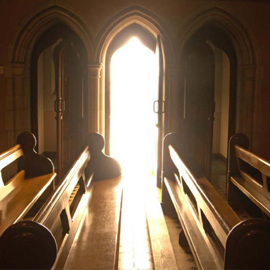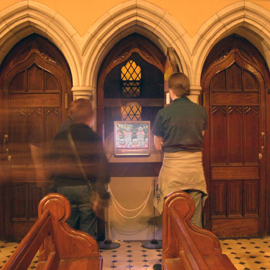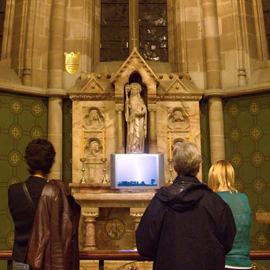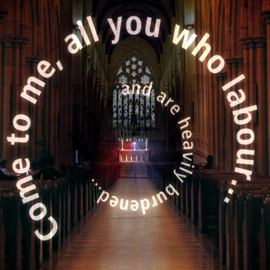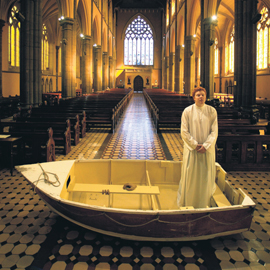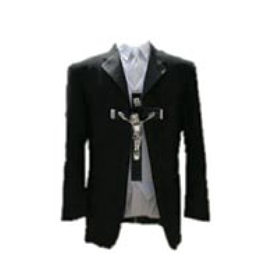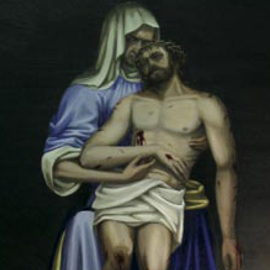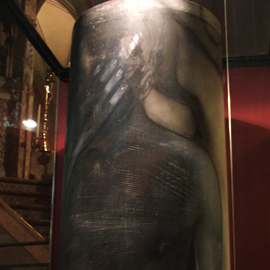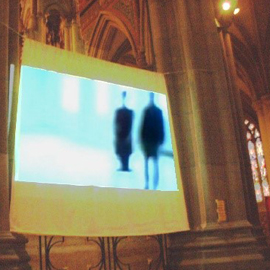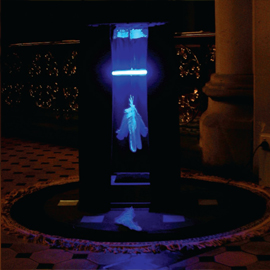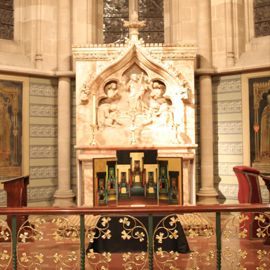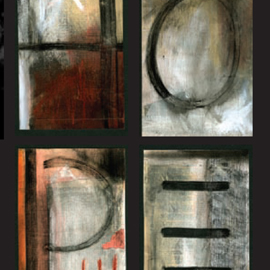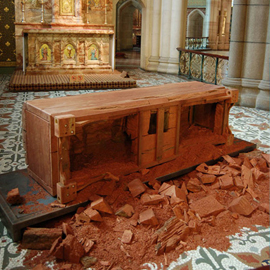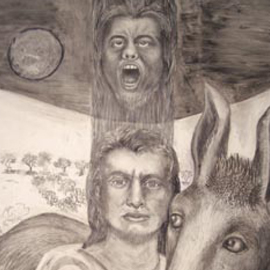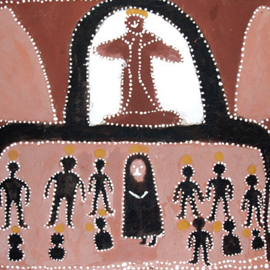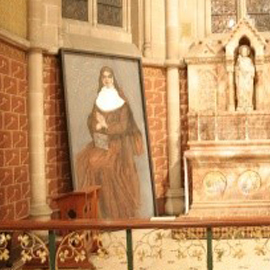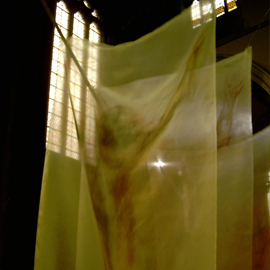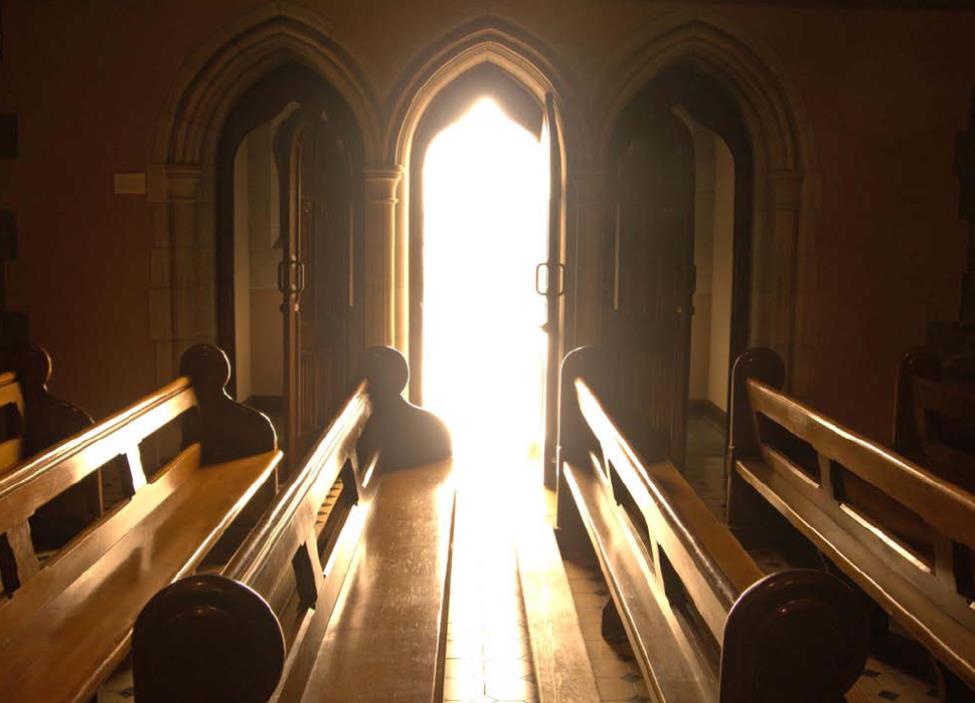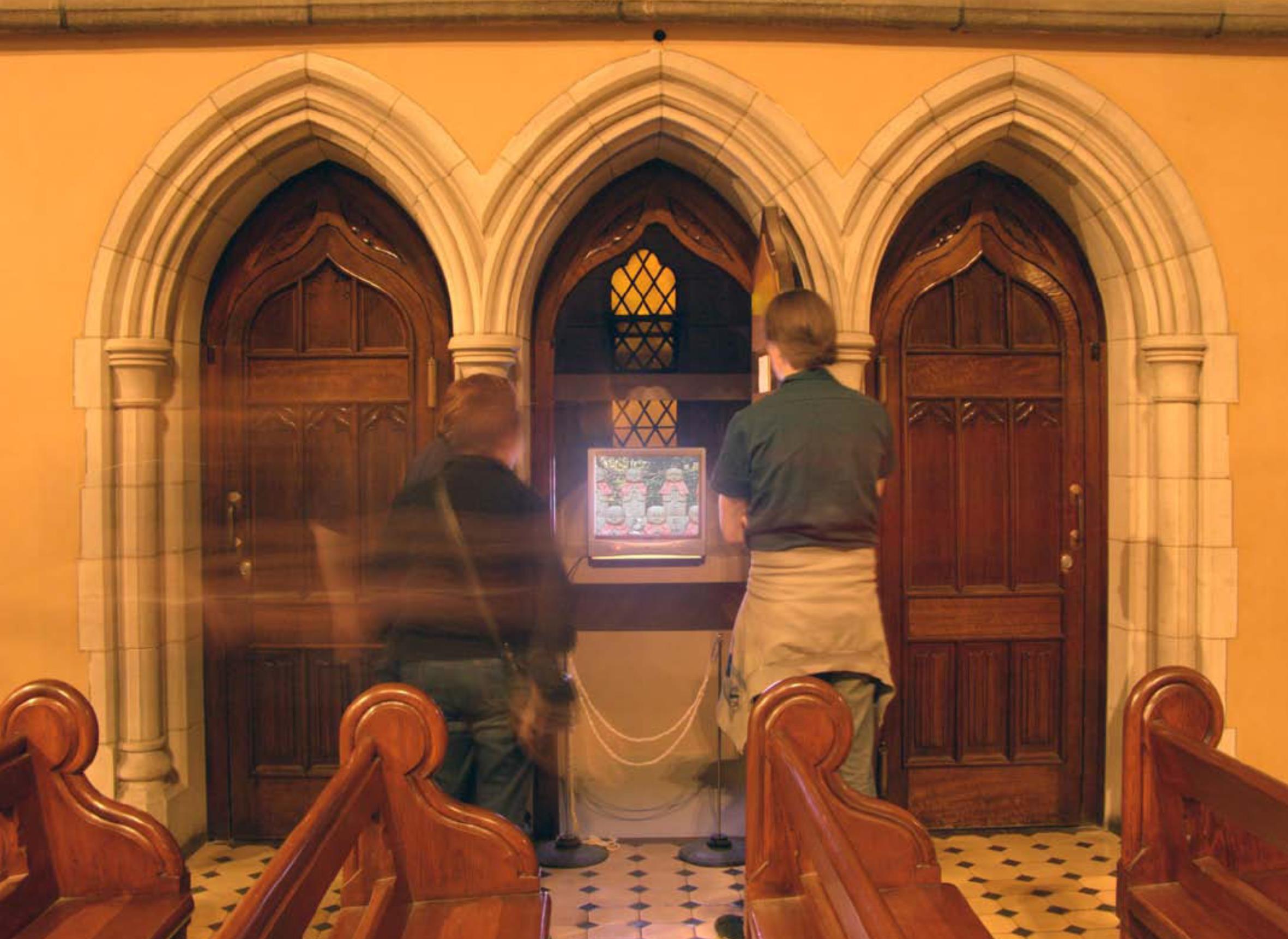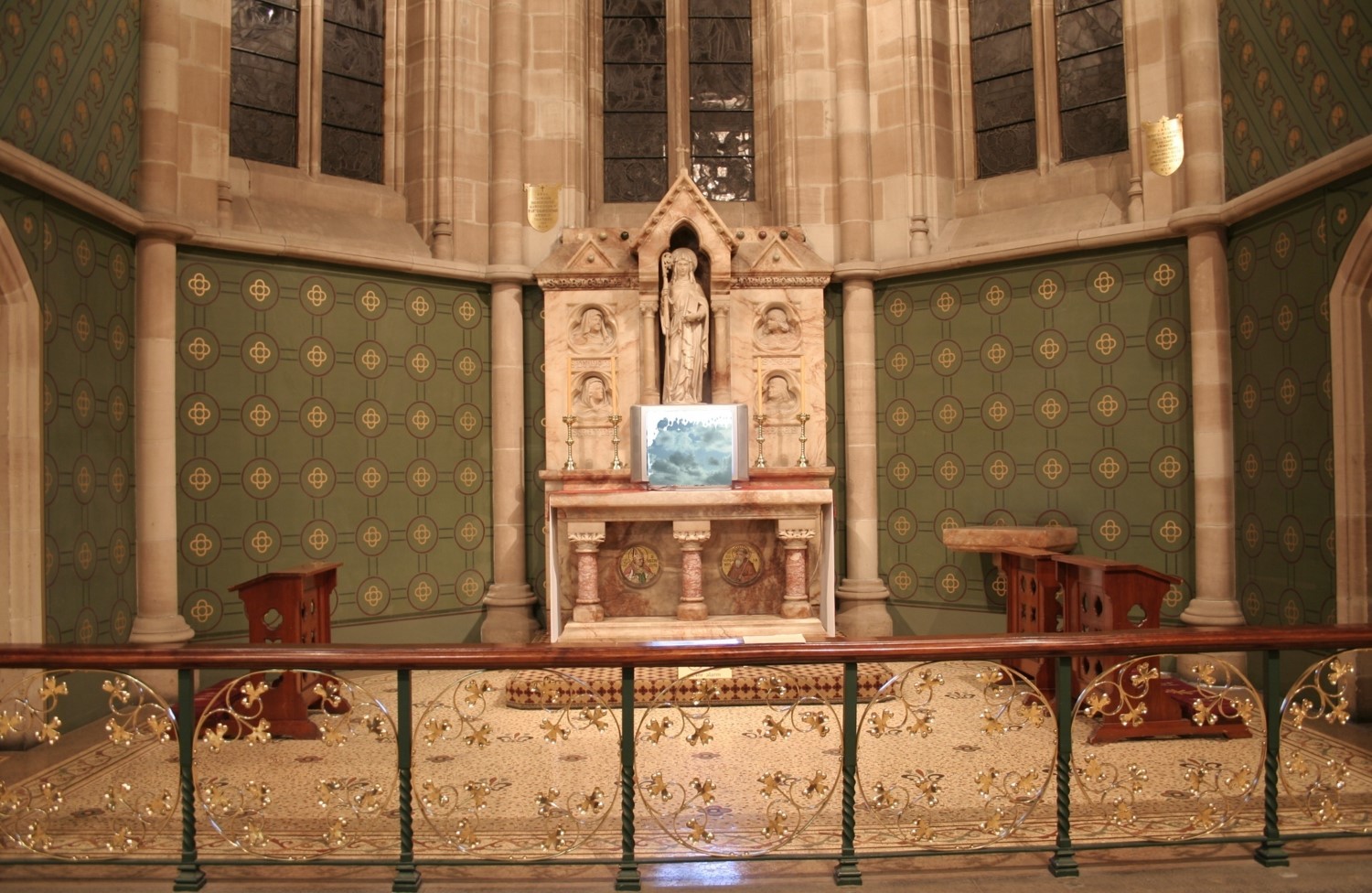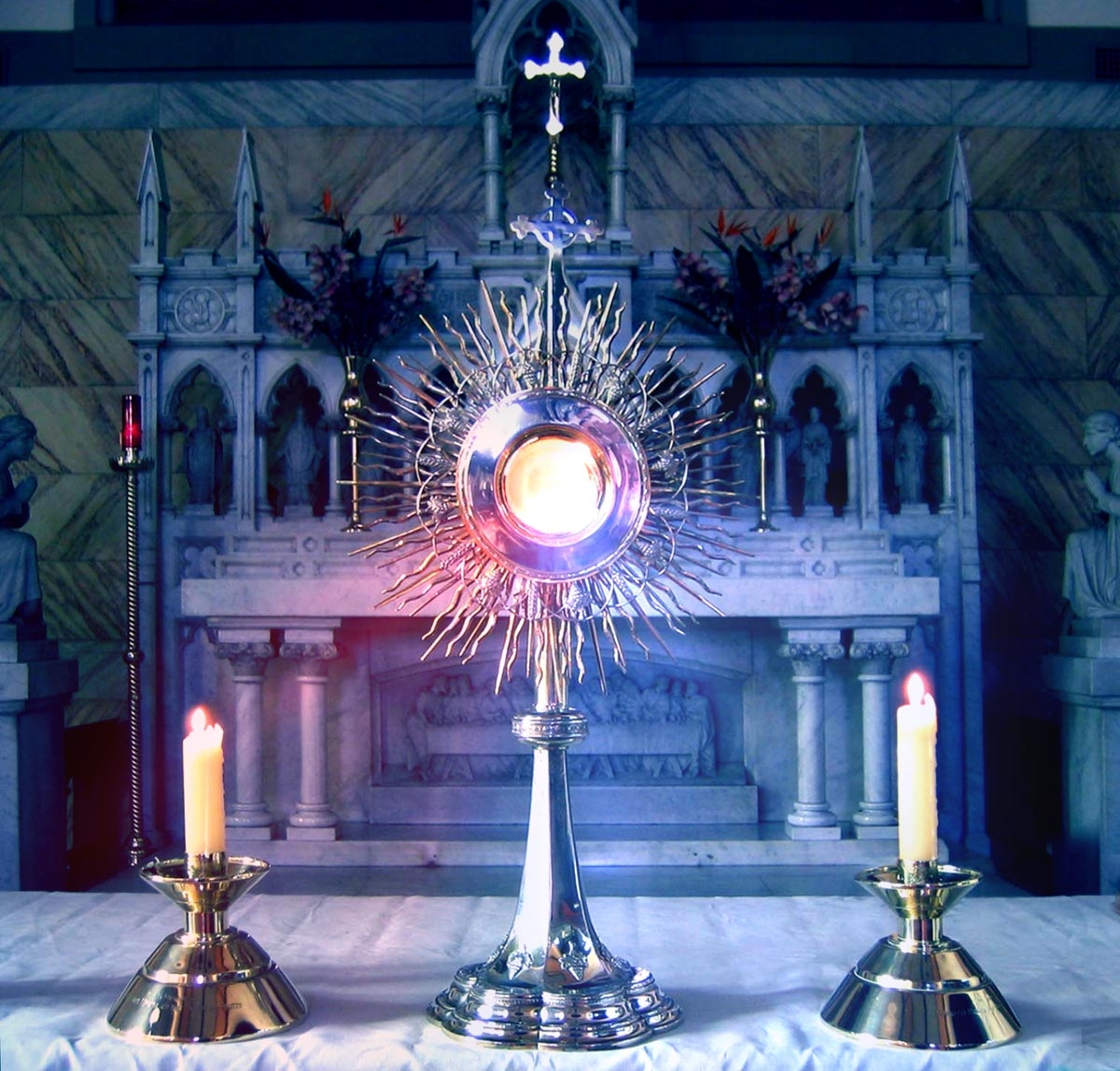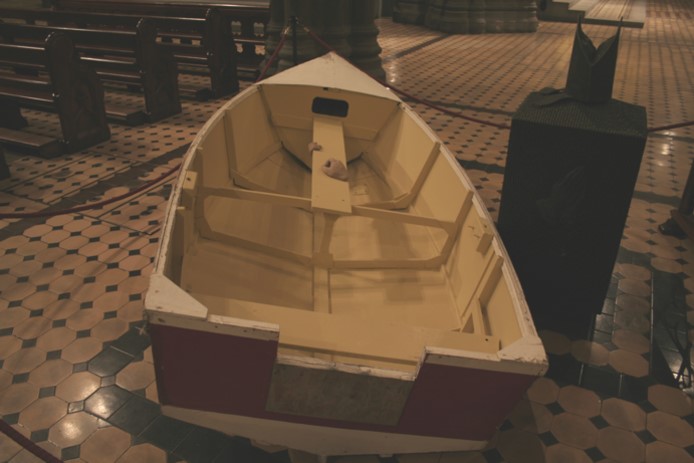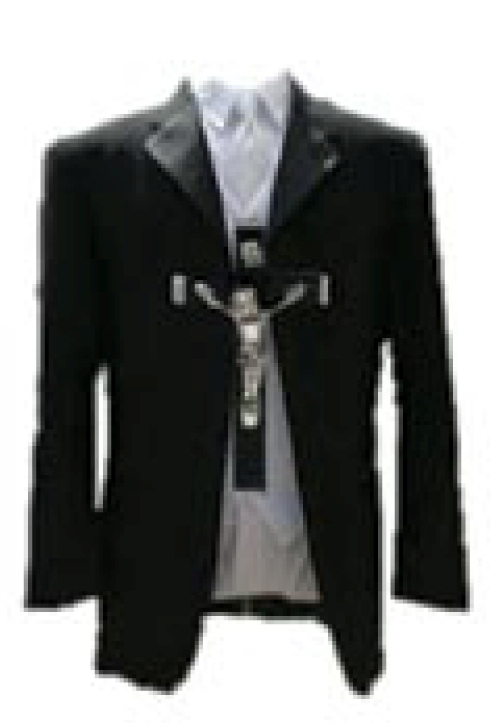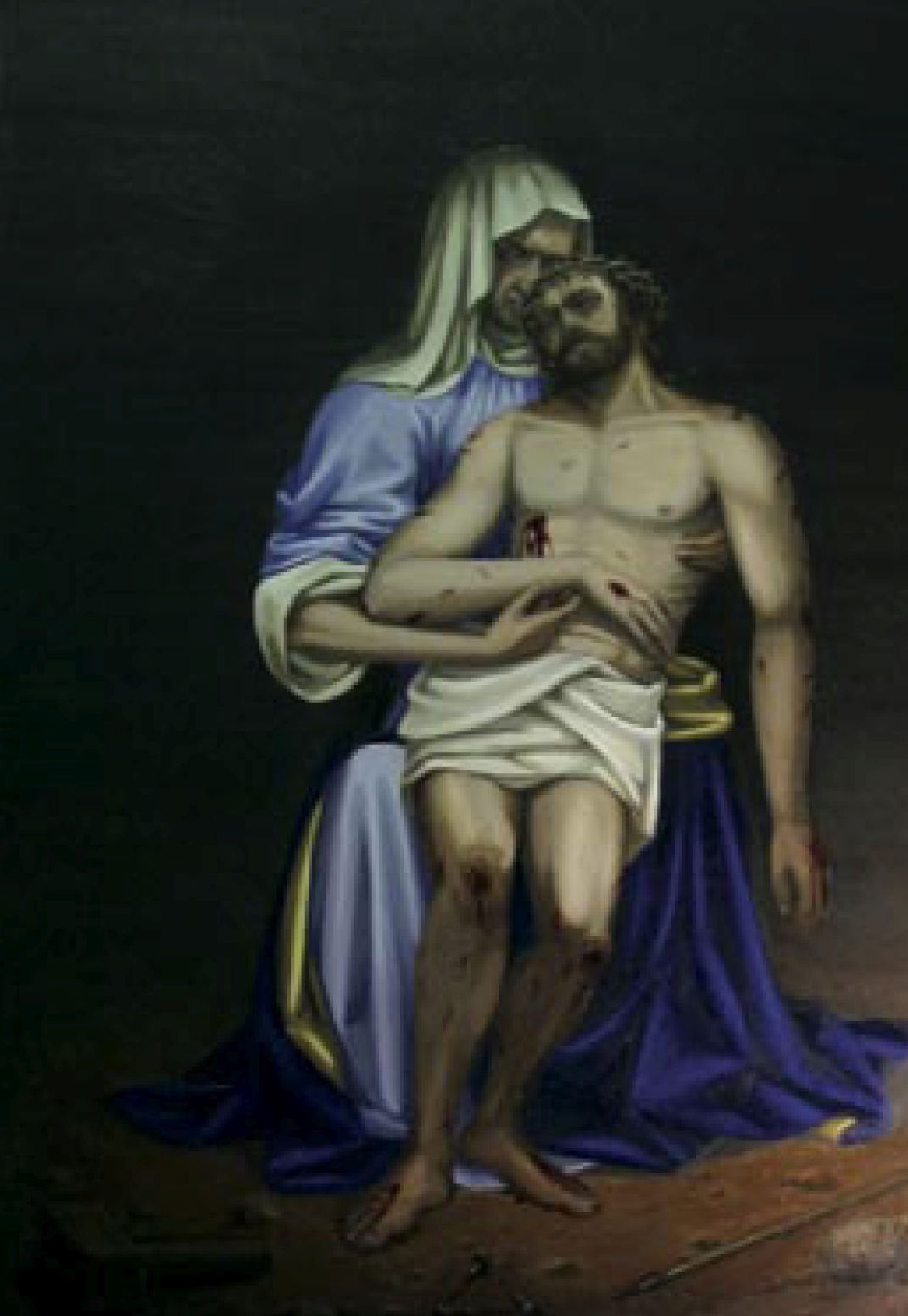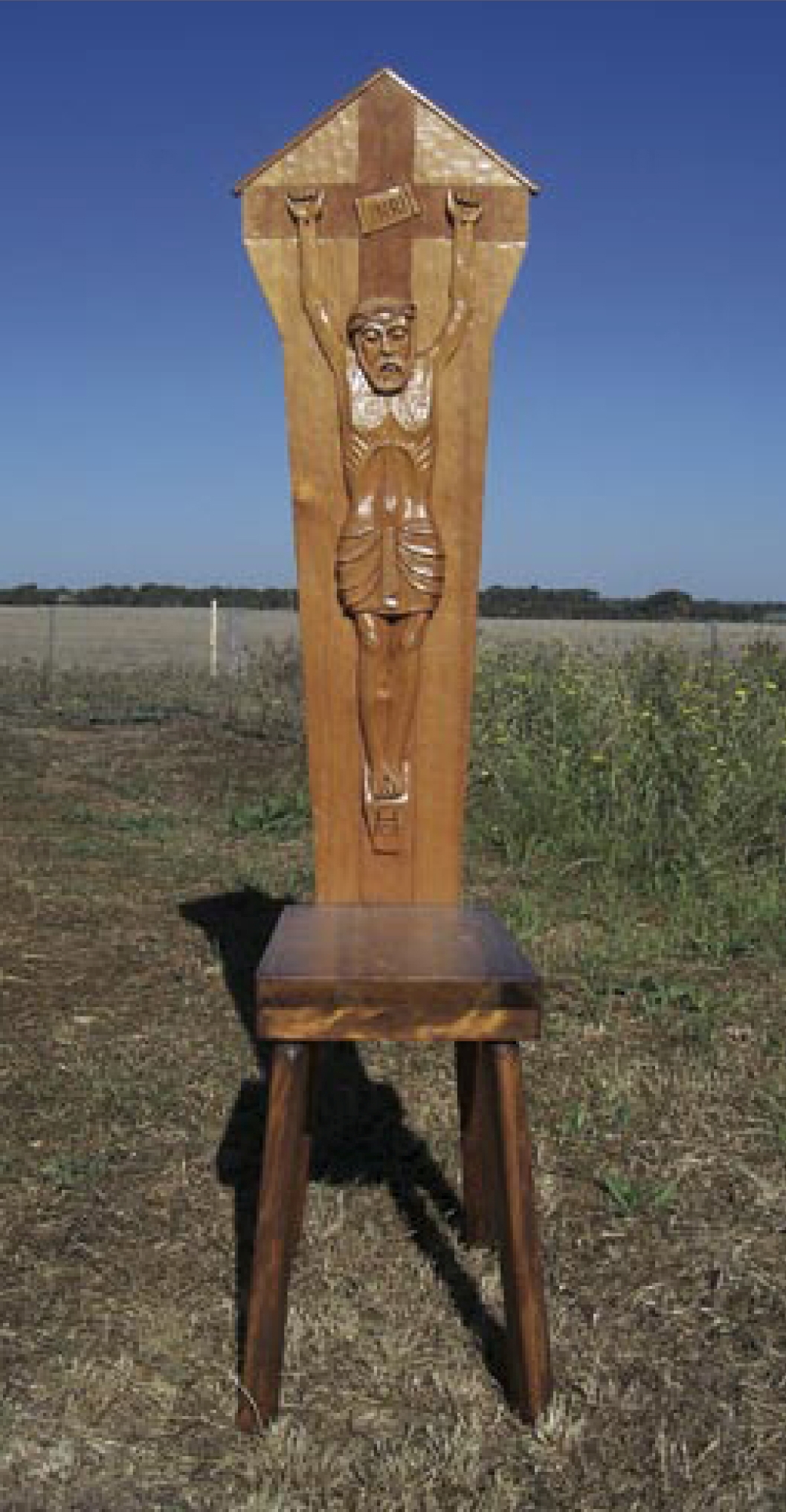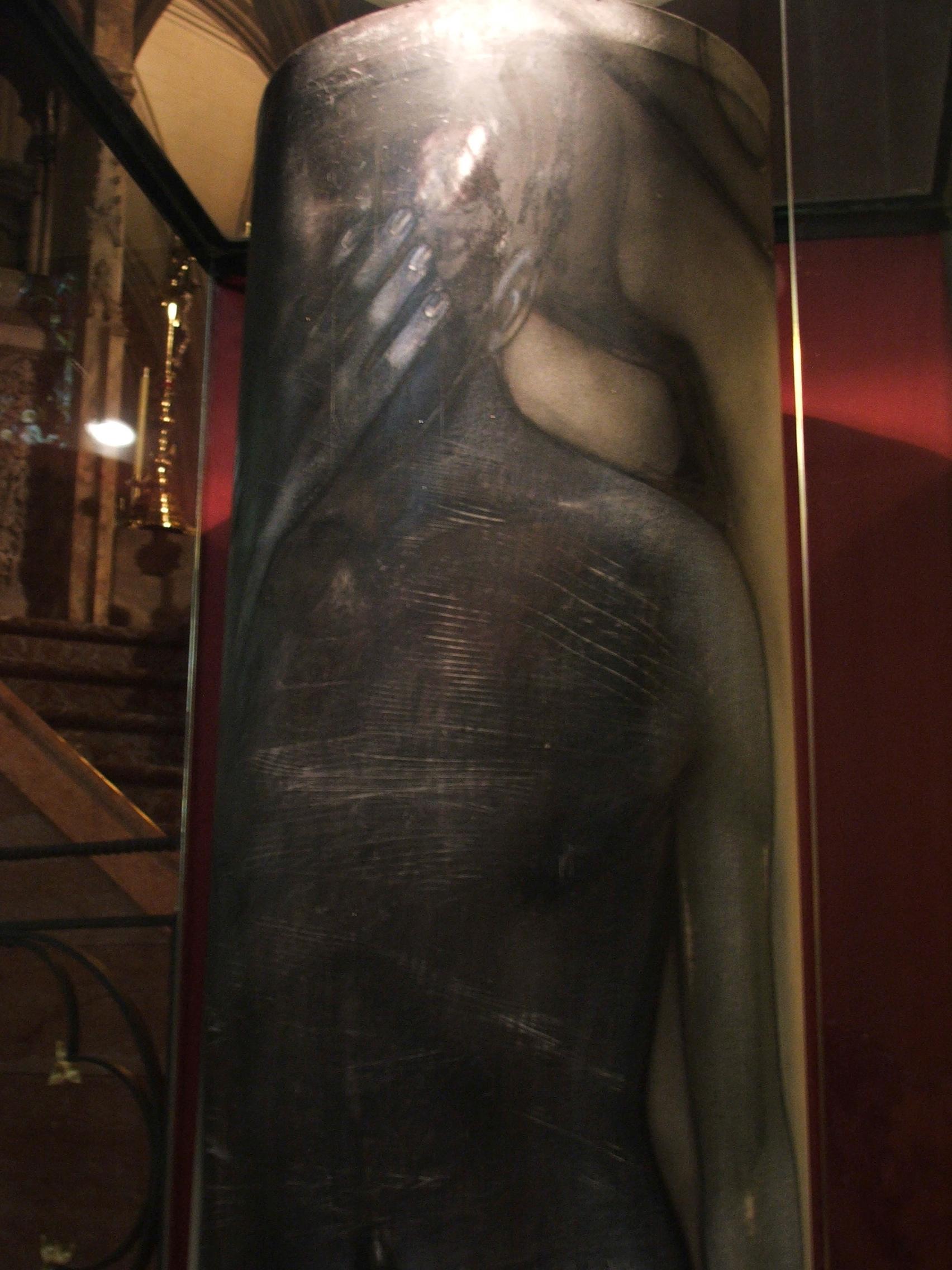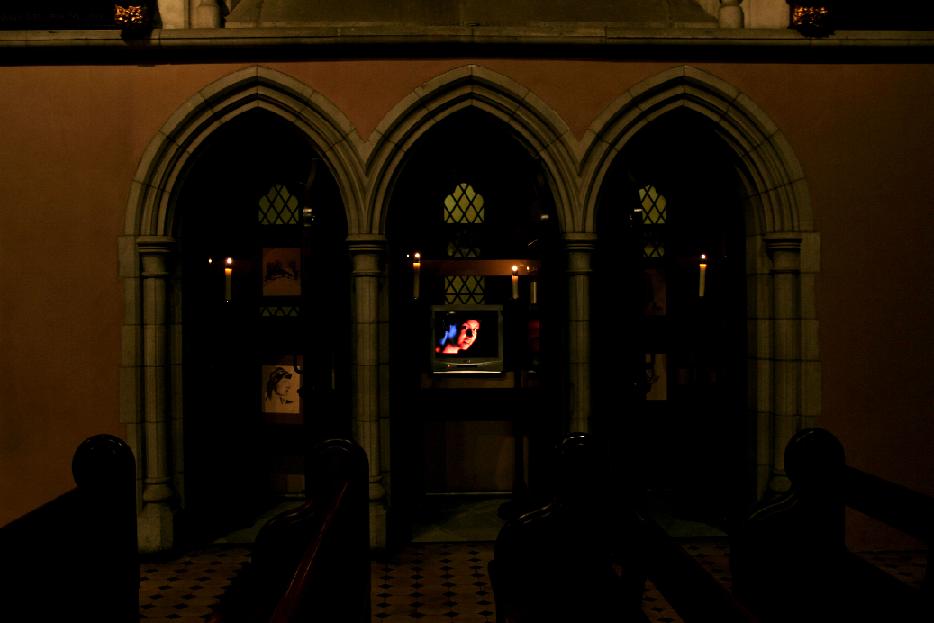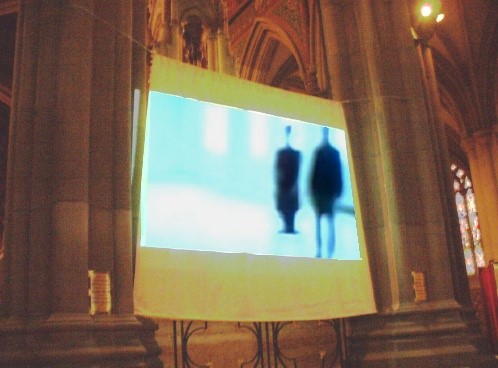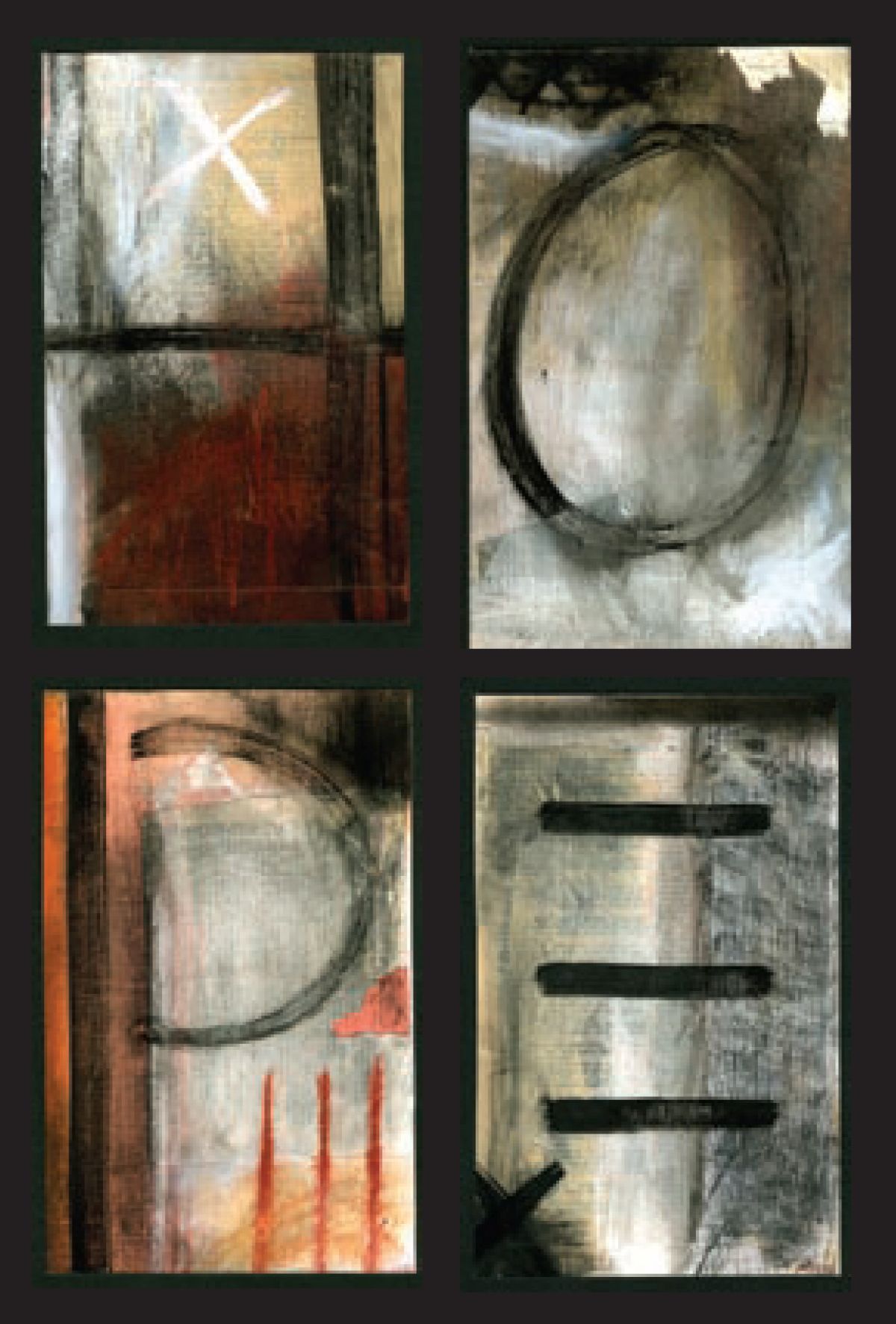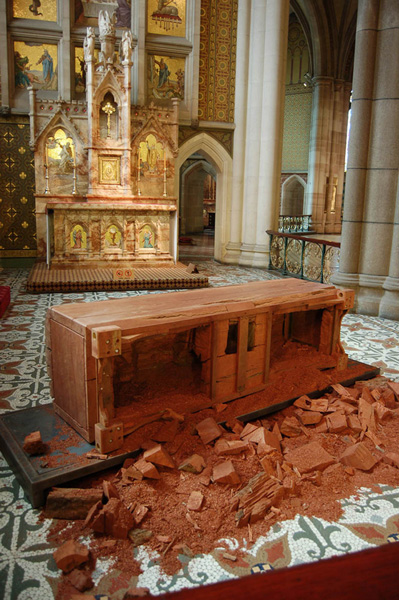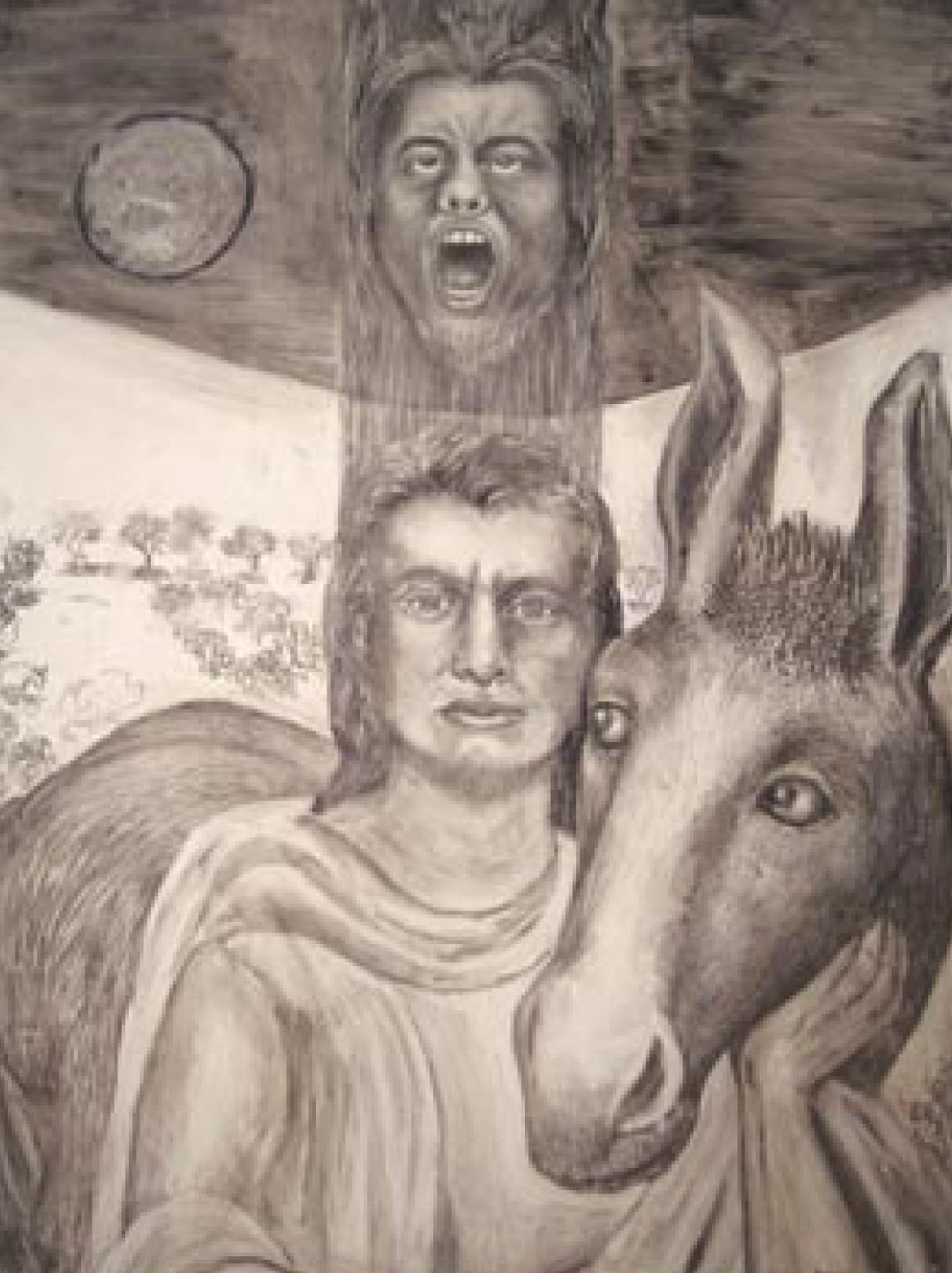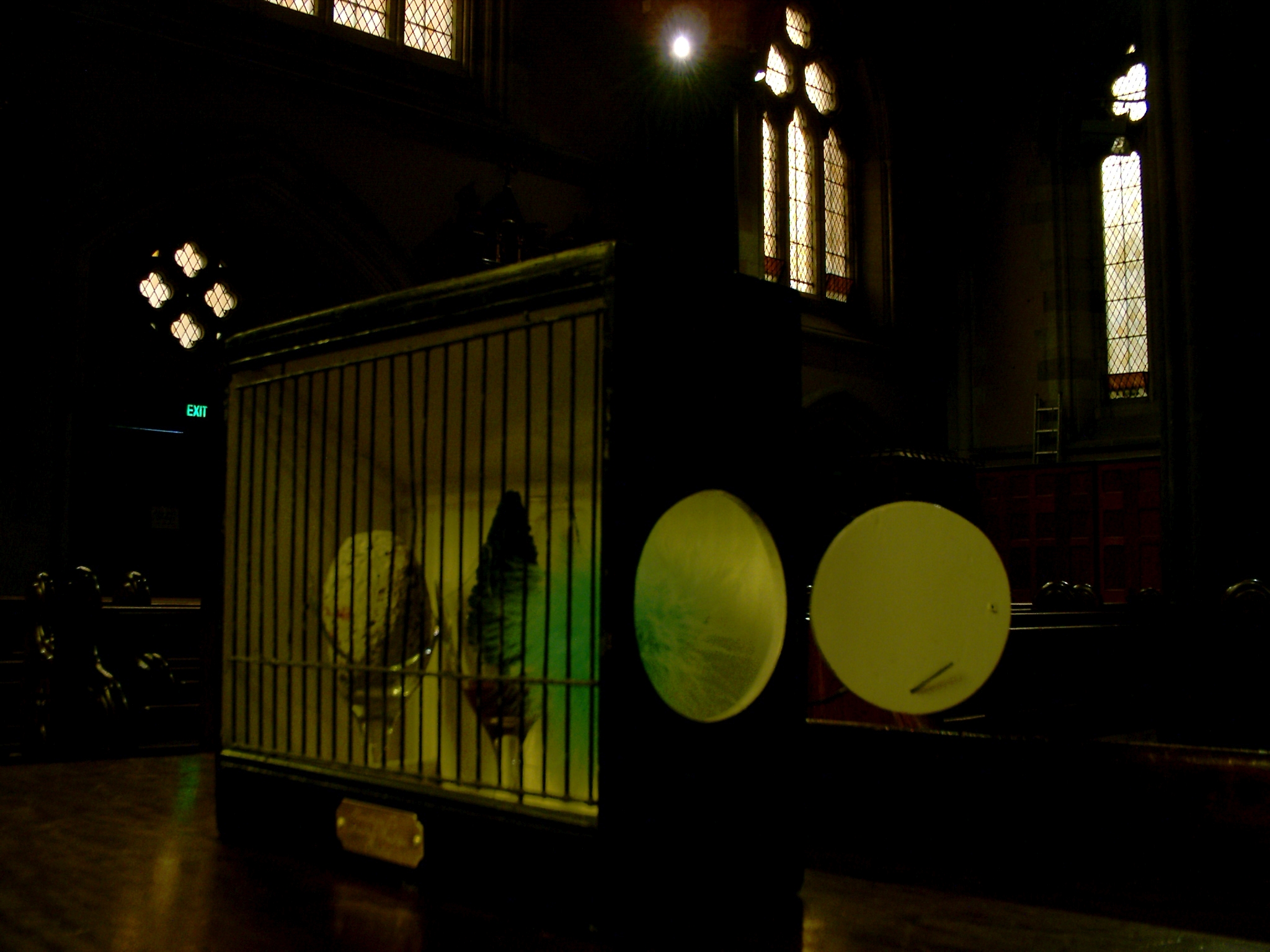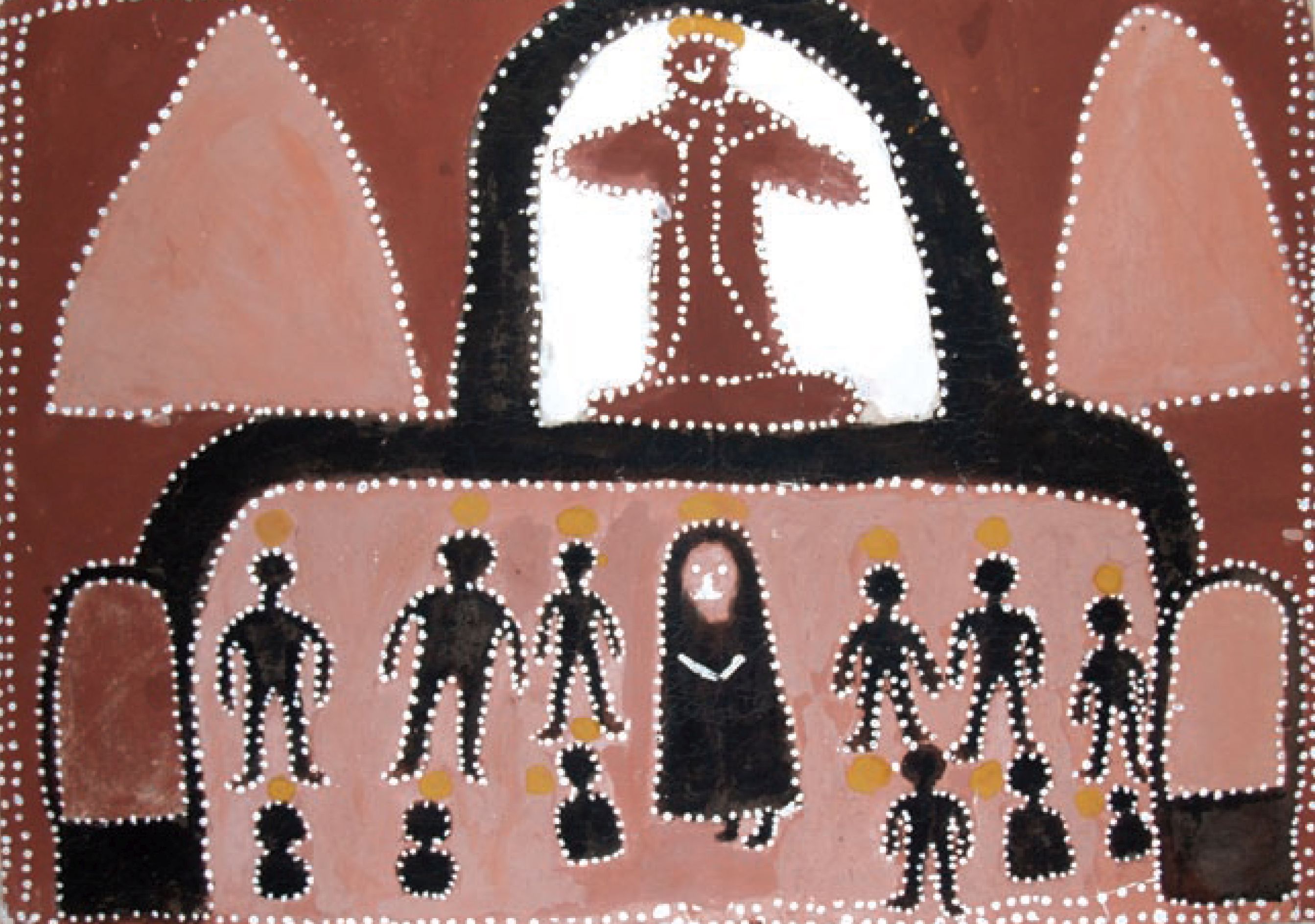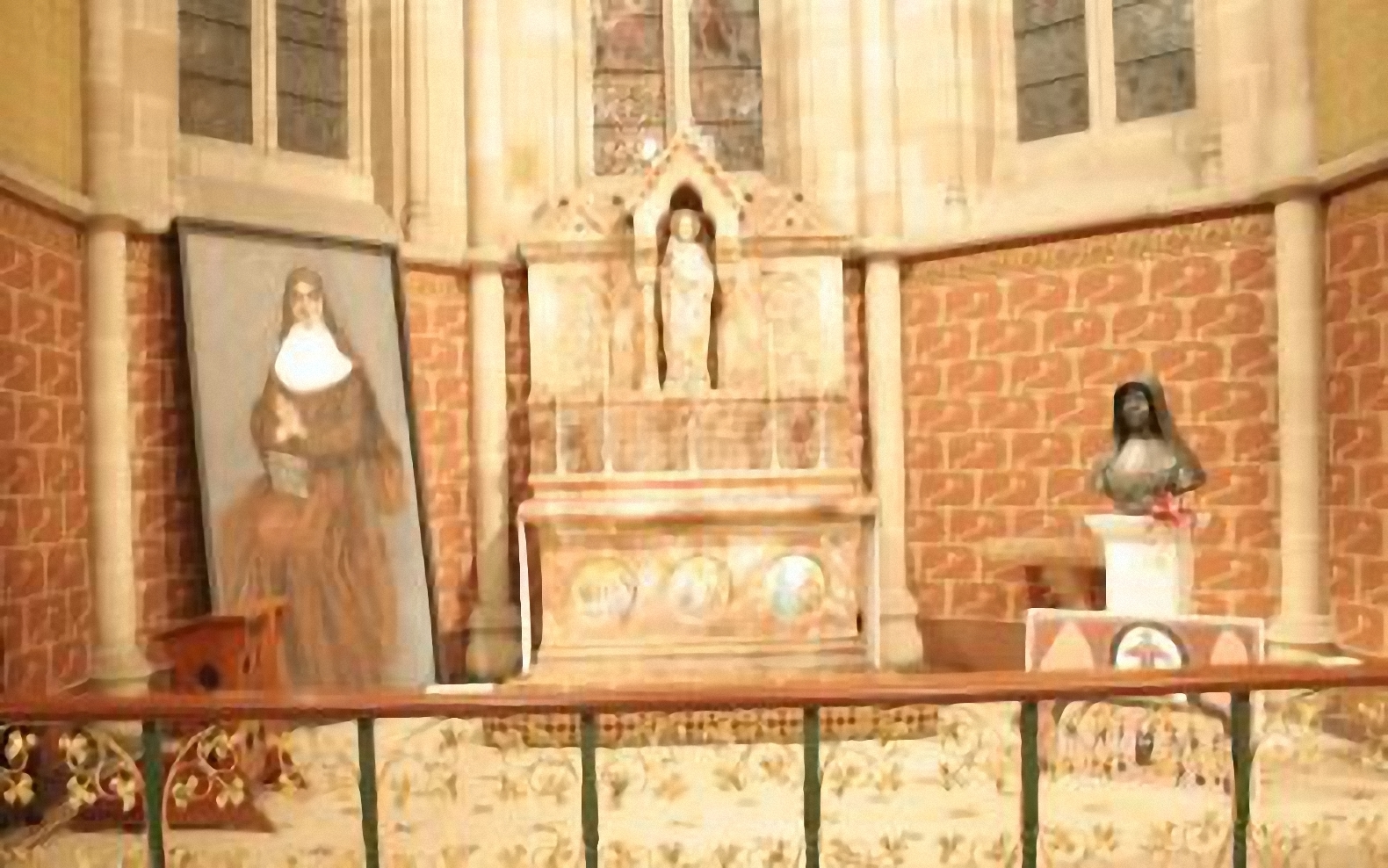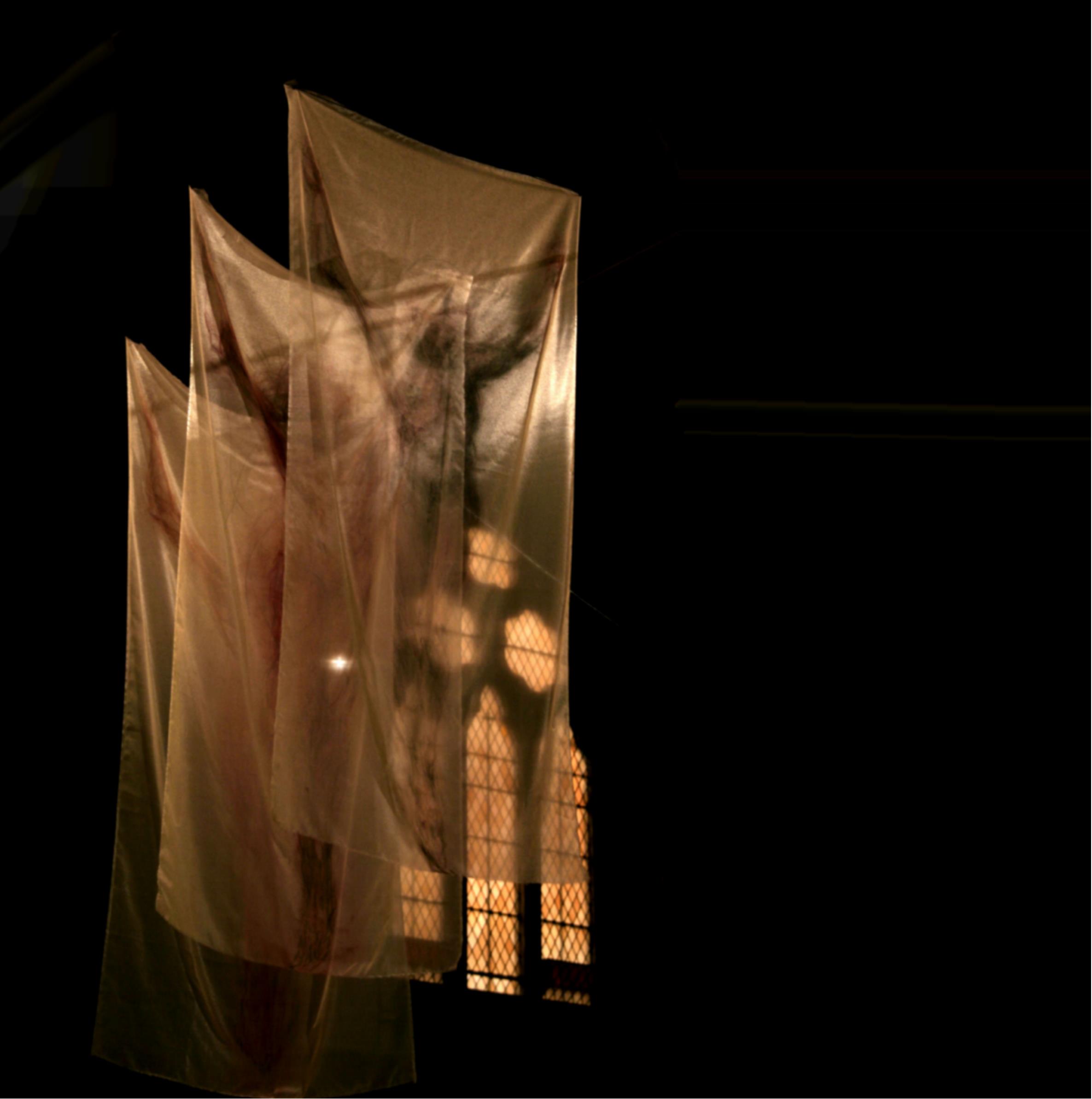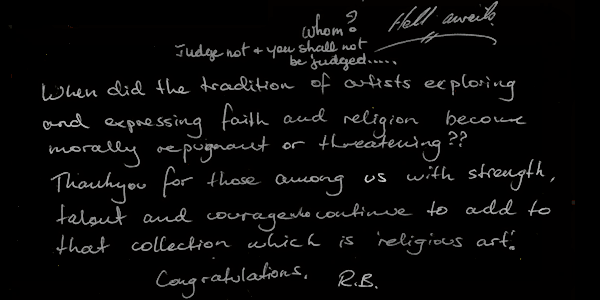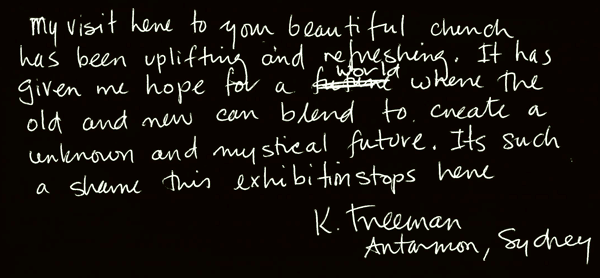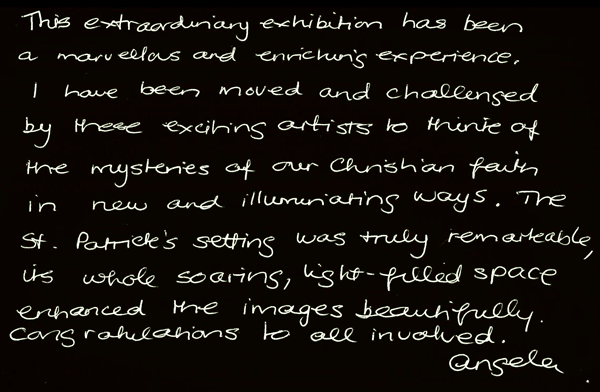ARTIST CONVERSATION
The following is an edited transcript of a discussion between David Rastas, Robert Klein Boonschate, Lindy Patterson, and James Waller concerning the nature of sacred space in respect to the cathedral exhibition,“ Crisis, Catharsis, and Contemplation”. The discussion was recorded in the artists’ studios, with works in progress for the exhibition hovering around and resonating with ideas as they arose.
DR: My hope is that
this exhibition will help us
rediscover the Gothic space.
Contemporary art in the Cathedral
can help us to see with new eyes;
this is not a game; the experience
is potentially transformative.
LP: The space wishes to have that
transformative property.
RKB: Yes, and it can only achieve
that through public interaction.
DR: The viewer is invited into the
heart of the space and it is in
the heart that this encounter with
the sacred takes place.
JW: We are elevated through the
space
LP: It is a consecrated space;
made so through ritual.
JW: Yes, but the elements of
stone, glass and wood are imbued
with spiritual essence to begin
with. Look a the glass, it’s very
nature is to let light through;
this is the mystical metaphor of
the saint. Thomas Merton relates
how the saint is as a clean pane
of glass; he describes the Blessed
Virgin as the cleanest pane, the
clearest glass, allowing the light
of the divine to pass through her,
unobstructed. There is no ego
dusting the glass. When the light
enters the cathedral it
illuminates all the aesthetics.
RKB: The inside is a living
breathing space where humans come
to share. We need to see freshly,
to ‘upkeep the law’, as Aboriginal
people would say; to reactivate,
retouch.
DR: Interaction with art in the
Cathedral gives the work and the
space new life. Look how we dress
up the Infant of Prague; our
overdressing of him adds new
meanings; and conceals the poverty
underneath; or the Madonna images
in Florence, given new meaning
when pilgrims place jewelry on
them. The object is not
‘finished’; it has a life which
continues; we want to be involved
and participate.
JW: As artists have always done.
DR: All of the artists in
this exhibition invite us along on
a journey where we discover and
rediscover; our interaction
somehow activates new meaning in
the work.
JW & RKB: Transient,
commercial contexts for art are
totally inappropriate.
DR: Perhaps the idea of
‘exhibition’ is also inadequate.
JW: Yes - the loss of perceived
spirit in art leads to a
devaluation of artworks in the
gallery because the fairy-tale
palace of the gallery negates the
context of works.
RKB: They are instead used as
intellectual fodder!
JW: The gallery is not a space
where the inner life of artwork
can be activated in a true, living
way. In the Middle Ages people
used icons as palagia, in
processions, as legal authority
...
DR: Placing religious objects in a
gallery next to art that is not
engaged with religion is quite
insensitive.
RKB: They’re looking for contrast
in an analytical way- looking at
the materiality of the work,
rather than its spiritual
function.
LP: A lot of people have trouble
with spirituality in art. It’s not
fashionable, especially not in
academia.
DR: But how can we deny the
spiritual in art! Spirituality is
perhaps the only common thread in
the history of art. The first
creative impulse in cave art was
spiritual. The cave was the
catalyst …
JW: So what about caves, in
relation to the cathedral?
Kimberley, Lascaux, early
Christian catacombs ...
DR: We find comfort amongst the
stones.
RKB: Stone creates stillness.
JW: Weathered stone has such
spiritual vibration.
RKB: There is a sense of
immobility, of non-change;
reflecting on that is an
essentially spiritual
contemplation.
DR: I discussed this with Angela
in the cathedral; how the
confessional stone wall holds
within itself a story of
conversion and transformation. We
might compare this space with a
cave...
RKB: Stone becomes the witness.
JW: And St Patrick’s is ...
DR: ... bluestone, from
Warrnambool. Wardell wanted
sandstone but the Victorian
sandstone wasn’t strong enough.
Bluestone has a haunting
presence...
JW: the same kind of presence as
in a cave.
DR: A dark, cold space. There is
something about bluestone which
sits almost invisibly in the city
scape.
JW: Its part of the earth. There
is something real in its
connection with the land.
JW: The vibration of the land
informs the aesthetic vibration.
RKB: In Russia you have tempera
and gold; in the western desert we
have the drawings in the sand ...
JW: There is, I believe a
connection between the indigenous
concept of burr’yin, glimpsed as a
shimmer of light and the sacred
light of the Byzantine icon. For
the Yolngu in Arnhem Land, the
divine light - light of the
ancestors - manifests physically
as the shimmer of water ...
RKB: This is the concept of
immobility and movement combined.
The shimmer in the water shows the
illusion; the Hindu image of the
snake and the rope is the same -
the rope is the snake … the snake
and the rope; spirit and matter
together ...
LP: this is the guts of it; spirit
and matter unbroken!
All: Yes!
RKB: This is something the Western
rational mind can’t handle,
because it focuses on separation,
and thus the source of suffering
...
LP: This is the problem we all
have as spiritual artists.
JW: Light through the stained
glass also ripples like water ...
DR: Crosshatching similar to
arnhem land painting occurs in the
lead of the glass in the cathedral
JW: All is connected in the secret
history of art.
DR: Artists need to share these
connections!
JW: The light in James Clayden’s
ghost painting is harsh; he films
in an abject space; through the
alchemy of editing he manages
somehow to sculpt cold,
fluorescent light into figures –
he employs a light the opposite to
that of the cathedral -
interesting to see a contemporary
manifestion of spiritual light
within the auspice of a 700 yr old
filter; a meeting point between
two forms of light,
refraction/filtration.
LP: So perhaps a new form of light
within an older form may be a
central issue?
JW: Yes
RKB: Western man trusts the most
agressive, transient, artificial
mode, such as fluorescent light.
We’re going further and further
into the artificial
Page 14
...
LP: There are only degrees of
artifice; even the cathedral light
via the glass becomes in a way
artificial.
RKB: Sunlight has infinite
properties, fluoro has minimal -
something modern man can trust,
because we can no longer digest
the whole picture ...
LP: ... because we’re too
dualistic ...
RKB: Yes
RKB: And light can be used to
point back into the whole. How to
circumvent the movement of a whole
society moving away from light! Is
that possible?
DR: If anywhere, the cathedral has
the power to do that, unlike the
pseudo-sacred space of the
gallery!
RKB: You don’t trust the reality
of images in the gallery when you
see so many layers of operation
side by side...
JW: Clayden films Ghost Paintings
in the concrete warehouse which,
is the most abject manifestation
of the modern cave. His figures
are like cinematic Giacometti’s
walking to an eerie score … slowly
… in pulsing light. They are like
the last outpost of spirituality
in an abject world. In a way, the
gothic cathedral represents the
spiritual world of another age
which we have lost.
LP: Is this an expression of hope
or despair?
JW: Of hope, because even in the
most abject space appears the
being of light, the angel
LP: So the exhibition seeks to
redress the lack of balance
between the secular (artist) and
the sacred (space)?
DR: Absolutely! It does that just
to begin with - and from there we
find new epiphanies, new
revelations, new ways of accessing
what is at the heart of the space.
These revelations are not just for
art but are found in every aspect
of society ...
RKB: Our society has become very
aggressive.
DR: The cathedral is the battle
ground where this takes place. A
battle between spirit and matter.
The exhibition reflects the coming
together of our humanity.
LP: And we’re not apologising for
the sacred!
ALL: No!
DR: This is our role; to address
the fear of the sacred in western
society.
Returning to the works
DR: We’re talking about movements
of the heart ...
JW: ... secret spiritual missions
...
DR: ... beating harder and faster
and to a very different drum.
JW: These ‘movements of the heart’
are in Patrick’s work. His Homage
to Rublev brings us back to the
cathedral as a formalisation of
the forest. Inside a cage are
three broken glasses - in the
centre glass, a fir tree planted
in red ochre …
DR: which is also like the blood
of the earth/Christ ...
JW: The blue feather on the right
...
DR: ... the holy spirit ...
JW: ... and a reference to the
ethereal blues of Andrei Rublev’s
icons.
LP: It is just a little glimpse of
the spiritual ...
DR: Yes, and so is the icon- just
a launching place -
JW: The word is ‘just’ - because
you only just open the faintest,
brightest glimmer … it’s
monumental just to get to that. A
glimpse of something so wondrous …
beyond that faintest glimmer.
RKB: It’s reassurance gives great
hope.
Artworks
Click on area of map to view artwork

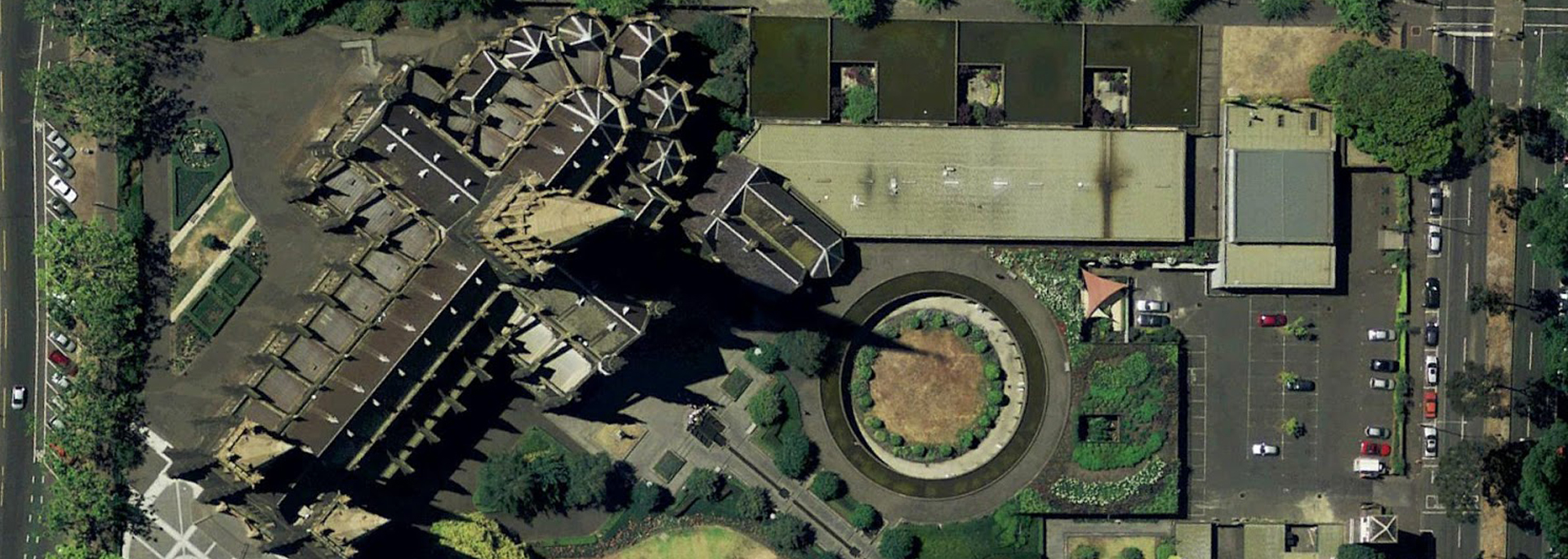
INTRODUCTION
It was Pope Paul VI who
said that the split
between faith and culture
was the drama of our
time. In another
time, the Church was the
great patron of the arts,
and Christian faith an
extraordinary source of
artistic creativity.
But things have
changed. The Church
still produces devotional
art for its own purposes,
and much of it is deeply
evocative. Yet art,
for the most part, has
taken its leave of the
Church and Christian
faith, as has Western
culture more
generally. The
search for meaning and
beauty tends to follow
other paths. For
Christianity, the danger
here is that it can find
itself in a kind of
billabong in which it can
only repeat the forms of
the past. It can
find itself a stranger to
the quest to forge meaning
and show forth beauty in
ways attuned to the deeper
currents of culture
today. But this
cannot be the way of a
Church called always to
speak the word of Christ –
ultimately meaningful,
ultimately beautiful – in
the idioms of today.
At the heart of
Christianity, there must
be a creative tension
between the forms of the
past and the forms of the
present, between
devotional art and art
that stands outside the
circle of faith, between
sacred space and the still
resonant spaces created by
art which, if not
explicitly sacred, is
clearly open to the
transcendent. Such a
tension will tend to
subvert conventional and
perhaps too-easy
perceptions of meaning and
beauty in order to bring
to birth new perceptions
which are more difficult
and more revelatory.
That is why this
exhibition, Crisis,
Catharsis and
Contemplation, strikes the
right note. It sets
the tension and strikes up
a conversation which may
at times be unsettling but
which can also be
enriching, even enabling,
both for Christian faith
and for art.
Bishop Mark Coleridge
Auxiliary Bishop of
Melbourne
ESSAY
"Art is born and takes
hold wherever there is a
timeless and insatiable
longing for the
spiritual." Andrei
Tarkovsky
This “timeless and
insatiable longing” has
inspired twenty-two
challenging, thoughtful
and evocative works for
display in two
extraordinary locations.
Their visual poetry opens
an unexpected dialogue
between contemporary art
and the gothic revival
Cathedrals of Melbourne
and Sydney. For millennia
artists have been bridging
the invisible with the
visible. Similarly,
religious tradition has
been witness to and
reactivated the Divine
mysteries which lie at its
core. Religious tradition
has been witness to the
divine mysteries and
constantly reactivated
their meaning. The gradual
forming of a chasm between
the contemporary artist
and the Church over an
interminable period is
rarely addressed in
contemporary culture. Crisis,
Catharsis and
Contemplation comes
at a time when the Church
is in crisis, most
contemporary art struggles
to engage religion, and
our visual contemplation
of the sacred is
desperately in decline.
......
Read moreArtist Conversation
The following is an
edited transcript of a
discussion between David
Rastas, Robert Klein
Boonschate, Lindy
Patterson, and James
Waller concerning the
nature of sacred space in
respect to the cathedral
exhibition,“ Crisis,
Catharsis, and
Contemplation”. The
discussion was recorded in
the artists’ studios, with
works in progress for the
exhibition hovering around
and resonating with ideas
as they arose.
DR: My hope is that this
exhibition will help us
rediscover the Gothic
space. Contemporary art in
the Cathedral can help us
to see with new eyes; this
is not a game; the
experience is potentially
transformative.
LP: The space wishes to
have that transformative
property.
RKB: Yes, and it can only
achieve that through
public interaction.
DR: The viewer is invited
into the heart of the
space and it is in the
heart that this encounter
with the sacred takes
place.
JW: We are elevated
through the space
LP: It is a consecrated
space; made so through
ritual.
......
Read moreTestimonials
Crisis,
Catharsis, and
Contemplation
April – May 2006
St Patrick’s Cathedral,
Melbourne
-
Curator David Rastas
Curatorial Assistants Carly Housiaux and Ishmael Bryce
Catalogue Editor Brendan Rodway
Designer Miriam McWilliam
Contributors Bishop Mark Coleridge and Rosemary Crumlin
Artists Patrick Bernard, Godwin Bradbeer, James Clayden, Francis Denton, Clayton Diack, Robert Drummond, Angela Di Fronzo, Grant Fraser, Melissa Hawkless, Gerhardt Hoffman, Robert Klein Boonschate, Queenie McKenzie, Michael Needham, David Rastas, Patricia Semmler, Claudia Terstappen, James Waller
